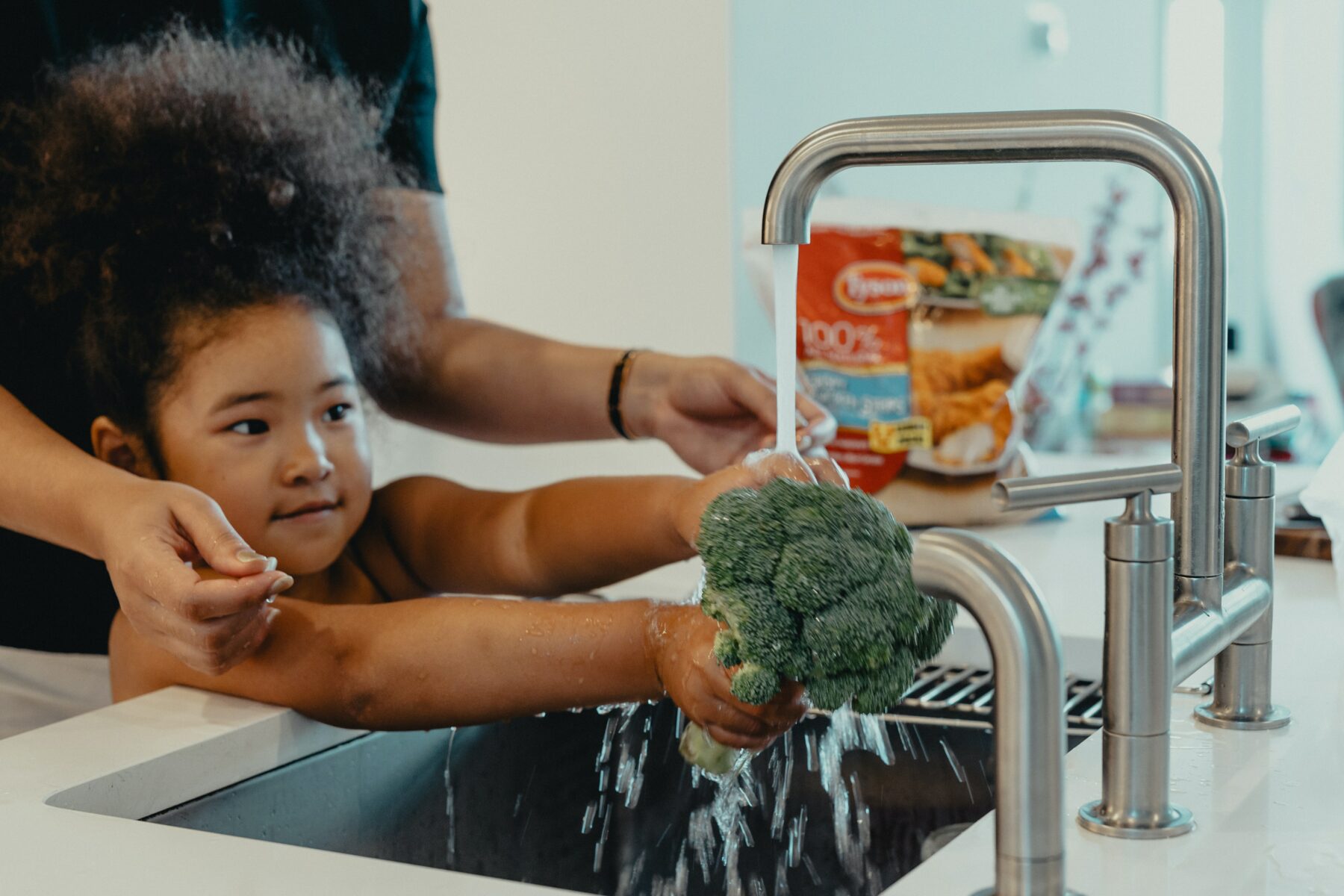3 Myths About Family Nutrition

Education around family nutrition sounded a lot like this when I was a child: “You’ve got to start eating more vegetables, or YOU WILL DIE!”
I was that child who ate from three “food groups”: the highly processed shell-shaped noodles that came in the blue box, the yellow cheese-ish substance from the accompanying packet, and the margarine I liberally spread over them. It wasn’t ideal, and I’m willing to own up to that now.
To be fair, my mother had a legitimate fear that I could not subsist on these food choices, and she was right. However, the more she pressured me, the more I looked at fresh fruits and vegetables as enemies.
Having now studied family nutrition extensively and raising my child differently, I learned there are three narratives around family nutrition that are still prevalent and need to change as they’re not serving us well.
Myth #1: We should label foods as “good” and “bad.”

When we label food as “bad,” two things can happen: First, when the child sees us, the role model, eating what we’ve called “bad” food, it’s confusing. Why would we model putting “bad” things into our bodies? Second, because of children’s developmental stages, they struggle to separate labels of their behavior from labels of who they are. So, we run the risk of them thinking they’re bad if they do something bad (i.e. eat bad food).
Truth: Different foods do different things for our health, and some foods offer more nutrition than others.
Focus on nutrition information rather than food shame. It’s perfectly fine and healthy to educate children about nutritional density. It might sound like this:
“This broccoli is full of nutrients! When I eat it, it helps my heart stay strong and healthy, reduces inflammation, and gives me lots of vitamins and minerals. This candy bar sure is yummy. It doesn’t do much besides give me quick calories for energy, so I eat this one less often.”
Myth #2: Parents decide what’s for dinner. Period.

There’s truth to the importance of adults choosing what the family eats. In a concept called division of responsibility, coined by Ellyn Satter, the parent decides the “what, when and where” for the family meal, and the child is responsible for “how much” and whether they eat at all.
Some people take this too far, though, and keep serving a meal the child legitimately hates until the child caves to hunger. That’s not respectful parenting, and it doesn’t set the child up for emotional safety with food.
Truth: Adults choose the foods but with children’s input.
What does this look like? Involve your children in meal planning. Nutrition education begins at home and, in some cases, education begins at the grocery store.
This is much more than just sitting down together and making a list of family meals for the week. Depending on their age, involving kids at a deeper level might mean you put them in charge of identifying healthy snacks in the grocery aisle, considering together what’s actually going into your bodies during the week.
Read labels together. Talk about how beautiful it is when food doesn’t need a label, such as blueberries or pineapple.
Yes, we should regularly expose children to new foods, but do so without metaphorically or literally cramming them down their throats. The goal is to create a healthy relationship with food where the child feels safe with it. That safety comes from feeling like they have a say in what goes into their body.
Myth #3: Kids should never play with their food.

Yes, it can be frustrating when your child is building a tower with their meal rather than eating it. And yes, it takes extra time to bathe the child when they’ve decided to finger paint with condiments. We have an old narrative that having physical contact with food is offensive, but there’s a different truth.
Truth: Children embrace eating for better health when they feel emotionally safe with food.
The simple act of touching food makes kids more likely to eat it. They want to know, is the food hard? Crunchy? Squishy?
According to recent studies around nutrition counseling, we know that if we want our youngest family members to try new things, they have to use their sensory systems to feel right about it. They’re going to want to twist, smear and snap it in half before they deem it edible.
From an evolutionary perspective, this makes sense: can you imagine what would’ve happened years ago if someone ate berries off an unfamiliar bush without checking them out? Humans are wired to explore; our health has depended upon it.
Ultimately, model what you want your kids to do. Healthy eating habits don’t come from fear but from children learning that a wide variety of foods are safe, delicious and nutritious. Food is simply part of a family’s existence together because it’s a big part of how we take care of our irreplaceable bodies.
About the Author

Sarah R. Moore is the author of Peaceful Discipline: Story Teaching, Brain Science & Better Behavior and founder of Dandelion Seeds Positive Parenting. As a master trainer in conscious parenting, she’s also a public speaker, armchair neuroscientist and most importantly, a mama. You can follow her on Instagram, Facebook, YouTube and Twitter.






